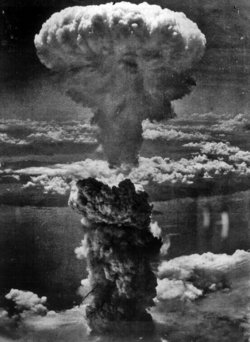PESHAWAR, Pakistan, Jan. 19 - Two years after the Pakistani Army began operations in border tribal areas to root out members of Al Qaeda and other foreign militants, Pakistani officials who know the area say the military campaign is bogged down, the local political administration is powerless and the militants are stronger than ever.
Both Osama bin Laden, who released a new audiotape of threats against the United States this week, and his deputy, Ayman al-Zawahiri, are believed to be living somewhere in the seven districts that make up these tribal areas, which run for more than 500 miles along the rugged Afghan border and have been hit by several American missile strikes in recent weeks.
The officials said they had been joined by possibly hundreds of foreign militants from Arab countries, Central Asia and the Caucasus, who present a continuing threat to the authorities within the region.
The tribal areas are off limits to foreign journalists, but the Pakistani officials, and former residents who did not want to be identified for fear of retribution, said the militants - who call themselves Taliban - now dispensed their own justice, ran their own jails, robbed banks, shelled military and civilian government compounds and attacked convoys at will. They are recruiting men from the local tribes and have gained a hold over the population through a mix of fear and religion, the officials and former residents said.
An American military official in Afghanistan, in an e-mail response to questions about Pakistan's tribal areas, said: "I believe this region is going through a period of revolutionary change, in which moderates and extremists fight for the future of their nations. And with vast, lawless areas in which Taliban-style justice holds sway, Pakistan faces serious challenges." The official agreed to comment only on the condition of anonymity.
Maj. Gen. Shaukat Sultan, chief spokesman for the Pakistani military, said the accounts of the size of the militants' forces were exaggerated. He put the number of foreign militants in the whole of the tribal areas at "100, plus or minus."
But the officials and residents say the militants are far more numerous, and have embarked on a disruptive campaign of terrorism, particularly in North and South Waziristan: in the last year, 108 pro-government tribal elders, 4 or 5 government officials, informers and even 2 local journalists, have been assassinated by militants, local journalists say.
Qaeda operatives are the driving force behind the local militants and are influencing their tactics, the officials said. The militants have managed this despite a hammer-and-anvil strategy in the region, with American military forces pressing from the Afghan side of the border. There have been three American strikes in the area in the past six weeks, involving missiles fired from remotely piloted Predator aircraft operated by the Central Intelligence Agency, but whether they were an expression of American frustration or the outcome of a burst of intelligence remains unclear.
Despite government denials, the officials said, the strikes may have had the tacit approval of Pakistan's leadership, which has issued mostly pro forma condemnations. The officials asked not to be identified because their supervisors do not allow them to talk to the media.
The most recent strike, in Bajaur on Jan. 13, killed as many as 18 civilians, but might also have killed several high-level Qaeda members.
[On Saturday, President Pervez Musharraf told Under Secretary of State R. Nicholas Burns that the Jan. 13 strike "must not be repeated," The Associated Press reported.]
Bajaur, Afghan and Pakistani security officials said, is not as out of control as North and South Waziristan, but it has become a staging post for fighters entering and leaving the eastern Afghan province of Kunar, where American forces have encountered some of the most serious resistance over the past year.
Al Qaeda's propaganda unit has produced video CD's showing Afghan fighters being trained by an Arab commander and mounting ambushes on American soldiers and convoys in Kunar. Afghans know of two Arab commanders who fought against Soviet forces and have stayed on in Bajaur, said the governor of Kunar, Asadullah Wafa.
The Afghan border police say they learned of a meeting in a mosque in Bajaur six months ago between members of the Afghan Taliban, a group led by the renegade mujahedeen commander Gulbuddin Hekmatyar from Afghanistan and the Arabs, during which they are said to have divided up responsibility for insurgent operations in Afghanistan.
Pakistan's military has become more cautious about emerging from its bases in North and South Waziristan, and the civilian administration is so hamstrung that the senior government representative in South Waziristan does not even live there.
"We run a government on paper, but not on the ground," said one government official who has worked in North and South Waziristan, which have seen some of the heaviest combat of the past two years.
Now, the heaviest fighting has shifted to North Waziristan, where there are reports of casualties among the military or the civilian population almost daily. At least three small mountain lookout posts built by the army with American funds have been knocked out, one official who was there recently said.
"The situation is going from bad to worse," the official said. "No one can raise their voice against the Taliban." Armed local militants come and go freely and have even opened offices in the main bazaar of Wana, in South Waziristan, driving up in pickups filled with armed fighters. They use the offices to recruit followers from the large, illiterate and unemployed youth of the area, a former resident said, asking not to be identified for fear of retribution from the militants.
Military operations, which have killed at least 40 civilians and wounded 600, said one official, have also driven youths to join the militants.
General Sultan, the military spokesman, cautioned against taking such reports too seriously. "Calling them Taliban is sensationalizing the situation," in an interview in his headquarters Rawalpindi. "There is a mix of foreigners, Al Qaeda and Taliban and local supporters." By Taliban, he meant fighters from Afghanistan.
He said foreign militants had been eliminated in South Waziristan and existed in North Waziristan now only in small groups, adding that there were also few local militants allied to Al Qaeda and other foreigners.
He did not have figures for military casualties in 2005 but said there were fewer than in 2004, when 250 Pakistani soldiers died. "It's not anything like that now," he said.
Home to six million people and covering 10,000 square miles, the Federally Administered Tribal Areas for years provided a sanctuary for Afghan and other foreign fighters opposed to the Soviet occupation of Afghanistan. But for the past four years, after members of the Taliban, Al Qaeda and foreign allies were driven out of Afghanistan, they have lived in the area and gradually taken greater control.
Government officials who have spent time in the tribal areas say there may be as many as 1,000 foreign militants there, but because many have intermarried and raised families, their status as foreigners is somewhat blurred.
Today the region is believed to be home to a kind of rogue's gallery. Besides Al Qaeda's leaders, Tohir Yuldashev, the Uzbek leader of the Independence Movement of Uzbekistan, which was allied with the Taliban, is thought to be in North Waziristan.
Jalaluddin Haqqani and Mr. Hekmatyar, who are both wanted by American forces in Afghanistan, and gained their fame as Afghan commanders from the days of resistance to the Soviet occupation, are widely believed to move between the tribal areas and Afghanistan.
(The Taliban leader, Mullah Muhammad Omar, and his close deputies, are thought to be farther south in the province of Baluchistan.)
The local militants are mostly also men who gained fought in Afghanistan, either against the Soviet Army or alongside the Taliban in its civil war against the Northern Alliance. But it is the foreign fighters who have most radicalized the local population, all agree. "The driving forces are the foreigners," General Sultan said.
The American military official in Afghanistan said the solution to the problem was to strengthen the Afghan Border Police, and "almost certainly it will involve Pakistan continuing to conduct operations in the border region and coming to grips with the Taliban influence inside Pakistan."
"Pakistan appears to struggle with whether to crack down on Al Qaeda and the Taliban, not just with how to crack down on them," he wrote. "This war will take time and unfortunately we expect future attacks on coalition and Afghan forces."
The inhabitants of the tribal areas are deeply religious, yet the local militants have introduced a new extremist language, like that of Al Qaeda, said one official who has spent time in the tribal areas.
The militants' main obsession is to fight Americans in Afghanistan, but they also attack the Pakistani Army and government officials, who are seen as subservient allies.
"They are religious, mujahedeen, and they think the military are serving the cause of Bush," the official said. The struggle is cast in the most messianic of terms, as a battle between God and Satan, he said.
Anyone who is seen to have links to the West or the government, including journalists who work for international news agencies, are also targets. Two local journalists have been killed and one kidnapped in recent months. Another left the area with his family last month after a bomb destroyed part of his house.
The military, rather than pacifying the region, has aggravated the situation by sidelining the civilian administration and the traditional tribal councils, which have also been drastically undermined by the numerous assassinations of tribal elders, the officials said.
The army's tactic of negotiating with militants in South Waziristan has only emboldened them, the Pakistani officials said. Self-styled Taliban militants have emerged in spectacular fashion in North Waziristan.
On Dec. 7 in Miram Shah, the administrative center, a band of militants waged a battle with a local criminal gang, killing 11 of them and burning down 25 houses.
The military and the Frontier Corps, which is a militia drawn from the local tribes, stayed out of the battle, and later the Taliban killed 26 or 27 gang members.
The clash made the militants enormously popular among local residents, who had suffered extortion at the hands of the gang, the official said. The campaign was reminiscent of those under the Afghan Taliban, who were born out of a movement to cleanse southern Afghanistan of rapists and other criminals in 1994.
Now, the official said, no one can contest the Taliban's authority in Miram Shah. General Sultan dismissed that, saying both groups in the clash had been put out of action.







No comments:
Post a Comment